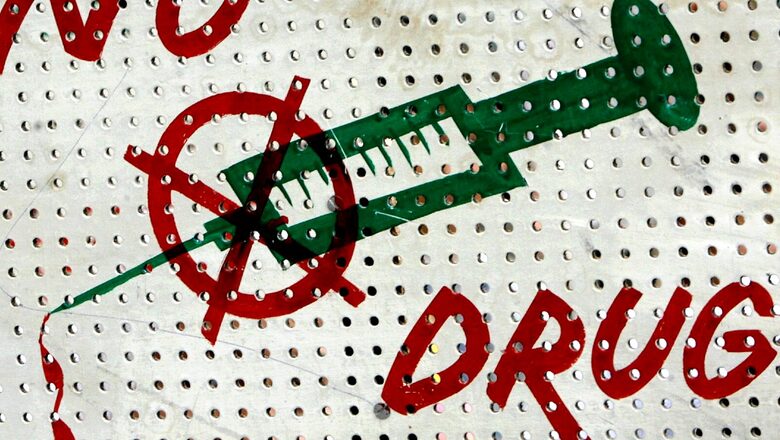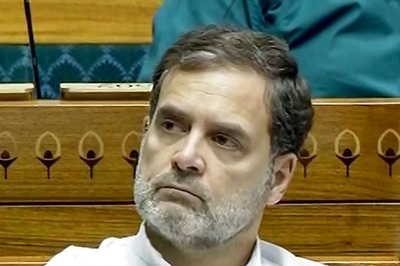
views
In the modern world, the word “drug” is one of the most used words. The first question, therefore, which comes to mind, is what really is the meaning of this word? Well, a drug is any substance (with the exception of food and water) which when consumed, alters bodily functions either physically and/or psychologically. They have a wide variety of uses, from medicinal uses to inducing intoxication.
Drugs may be ‘legal’ (for example, alcohol, caffeine and tobacco) or ‘illegal’ in variety. The latter category includes the usage of self-prescribed medicines which induce intoxication, certain intoxicating inhalants, Cannabinoids like Marijuana and Hashish, Opium and its derivatives like Heroin and Brown Sugar, stimulants like Cocaine, so-called Designer Drugs, ‘Club/Rave party drugs’ and so on. The latter basically are combinations of one or more kinds of ‘traditional’ and ‘chemical’ drugs, giving an enormous ‘high’. Besides them all, several other dissociative, hallucinogens, anabolic steroids and so on, also exist.
For the purpose of this article, I will confine myself to one variety, the dreadful Opioids, particularly Heroin which is nothing but a derivative of opium. We all know that the Golden Crescent, comprising Afghanistan and some parts of Pakistan and Iran, an are shaped like a crescent, is the highest producer of opium. The next such deadly area is called the Golden Triangle, a triangle-shaped geographical area lying in the regions of Myanmar, Cambodia and Laos, including some parts of Thailand as well. Both these regions sit on India’s shoulders, on either side.
To start with, India was basically more of a route for onward dispatch of drugs abroad, primarily to the USA and Europe. Going by the then rate of recovery, Punjab appeared to be the favoured route for drug smuggling. The reason was the fact that for decades, Punjab, as also the west coast of the then Bombay, were the major point of gold smuggling into India. With the somewhat stabilisation of international gold prices, the Punjab route became the route for heroin smuggling into India. Most of the families involved in gold smuggling switched on to heroin smuggling because the profit margin was immense. It was a kind of two-way trade. A good quantity of precursor chemicals, specific chemicals and acids, used in the manufacture of heroin, was routed either directly or indirectly from India and the final product, Heroin, was pushed back into India. Gradually, however, China emerged as a mass producer of precursors and replaced India to a great extent.
The UNODC and INCB list Asia, including India as one of the major precursor manufacturers. India is one of the signatories to the international conventions to control drugs. However, unfortunately, India still does not have a foolproof drug policy. The movement of opium and precursors is also not closely monitored. I remember that a drug controller of Punjab, in course of the proceedings of CWP 20359 of 2013, which was filed by me on the issue of drugs and is still going on the Punjab and Haryana High Court, had made this submission in the Court. On my petition to the Supreme Court of India, the Registrar had informed me that the Court is already seized of the matter. But perhaps sadly the government of India is still sleeping on it. There is no single authority to regulate psychotropic substances. It is all hotch-potch of ministries of home, drugs and chemicals, revenue and police with no controlling authority.
Hoping against hope is the maximum that a man can do. A bit more than a decade ago when I had exposed the Punjab drug racket and later when I approached the higher courts of the land, on this issue, I had to face stiff opposition both from Punjab police and a section of politically oriented individuals. This stiff opposition included threats of life to me and my family, attempts to kidnap and also attempts on my life. Though I continued fighting against the menace, I did hope that things might improve in Punjab. Sadly, governments came in and went out but the situation remains the same, if not worse.
There has been just no attempt to ascertain the damage to human lives and also their properties. Newspapers continued reporting addiction to this white poison, called ‘Chitta‘ in Punjab, while the police and the governments claimed all along that heroin usage and inflow had come down considerably. But recent revelations by reputed agencies like NIA, NCB, DRI, Customs and more have painfully shattered this myth. In the recent past, there have been massive recoveries of heroin. One recent newspaper report pegged an increase of about 37,000% in four years, from about 8kg in 2018 to about 3000 plus kgs in 2021. Major hauls were recovered at Mundra and Kandla ports besides the recent boat haul in Katch. These are amongst the major recoveries. So I will not count them while referring to other minor recoveries all over the country which, to my mind will be covered under the thumb rule that only about ten percent of recoveries normally get made. About ninety percent do not come to notice.
Agencies claim these major recoveries were part of consignments for some international drug cartel. If it is true, then does it means that India is a fast emerging and C&F (clearing and forwarding) agency of contraband drugs ultimately destined for some foreign lands. If this hypothesis, unfortunately, comes true then it will mean that India will soon find a place in the grey list of countries like Colombia. And if this C&F theory is wrong then it will have to be admitted that these hauls were for internal consumption within the country and the entire country is reeling under a drug crisis. Now it is for these agencies to make it abundantly clear as to which hypothesis is correct? Now the next issue is equally worrisome. It is being said that all these national agencies had found a common link: Punjab. Does it mean that Punjab is the place from where drugs are distributed all over the country?
Coming back to the subject of heroin, Chitta, as it is called in Punjab, indeed is habit-forming and lethal as well, but its ‘potency’ depends on the way it is ‘cut’. Cutting means that its potency is increased by treating or mixing it with some chemicals and certain pharmaceutical preparations. According to a newspaper report emanating from Himachal Pradesh, it was recently claimed that heroin or Chitta being smuggled into Himachal from Punjab was more addictive and fatal than the one sourced from Delhi. It was claimed that heroin from Punjab can bring the platelet count to less than 10,000, which can be fatal. It is because this heroin is cut with certain medicines like ‘Megaloblastic and Trimethophim’ or such other chemicals which tremendously increase the high effect of heroin. It is a matter of probing whether this heroin allegedly coming in from Punjab, was cut within Punjab or was cut in its place of origin itself, which is in Afghanistan /Pakistan or Iran itself. Himachal also claimed that in comparison, the heroin coming from Delhi (possibly from the golden triangle) was more ‘benign’ since it was cut with ‘Paracetamol and Dextromethorphan’.
Next in the line, there have been some reports that heroin is even being indigenously manufactured. If so, then this indigenous production is a matter of shame. On record, 22 districts in three states of India, that is in states of Madhya Pradesh, Rajasthan and U.P. produce Opium. There have however been reports that in certain other areas, including some on the West Bengal – Bangladesh border also, Opium is produced. I did check up with my friends in anti-drug groups but this allegation could not be confirmed beyond doubt. It could not be confirmed that commercial category heroin is produced at any of these places. However, there have been some unconfirmed reports that brown sugar is being manufactured at some of these places. This brown sugar is nothing but low-grade heroin, a semi-synthetic opioid derived from the poppy flower. It is possible that in cahoots with some corrupt officials, this brown sugar variety of heroin is being made in or near any of these opium-producing areas.
Drug smugglers are always on the lookout for new routes and ways to push drugs into the country. There is evidence to show that they have tried all possible routes and most of them are still active.
In the case of the Golden Crescent, drugs have been pushed in through land routes falling in the states of Punjab, Jammu and Kashmir, and Nepal. Several recoveries have been made along these still active routes.
As compared to the Golden Crescent, which has been more notorious, smuggling into India, from the Golden Triangle, has comparatively been on somewhat of a lower key, the primary reason being distance, inhospitable terrain and the absence of governmental patronage, as is more than abundantly clear in case of our belligerent neighborhood, Pakistan.
Interestingly opioid drug smugglers have also been trying the aerial route as well. They have not succeeded much because of higher costs and the fact that bulk heroin can’t be pushed in that way. Yes, it is believed that this air route, besides of course the ‘shipping’, is more used in case of Cocaine smuggling from across the Latin American countries.
Of late, the sea route appears to have become a hot favourite of opioid smugglers because massive quantities can be pushed in one go and it is more unobstructed as compared to land routes. Recent recoveries from some Indian ports and across the Kutch sea waters bear testimony. In the case of the sea routes as well, I would like to invoke the said thumb rule of ten percent, though with a higher margin, because finding safe houses and willing accomplices is more difficult along the sea routes, as compared to those situated on land.
To sum up, the state of affairs with regard to drug addiction is very grave in the country. While in rural areas, a section of students and amongst the not-so-rich social segments, Cannabinoids are certainly being used, drugs including the purest form of heroin and cocaine are more prevalent amongst well-to-do sections of society. The choice of drugs is also an issue in a section of the youth with creamy layers, particularly in Metro cities. There have also been allegations about the use of Cocaine, designer and rave party drugs among wealthy circles of the youth.
It is about time that the governments, both at the centre as well as in the states, wake up to this issue before they all start ‘flying’ (Udta Desh).
The author is a former IPS officer who has worked at various posts in Punjab including as the DGP. The views expressed in this article are those of the author and do not represent the stand of this publication.
Read all the Latest Opinions here


















Comments
0 comment